Japan’s elderly draw on self-help strength in clean-up effort as flood death toll continues to rise
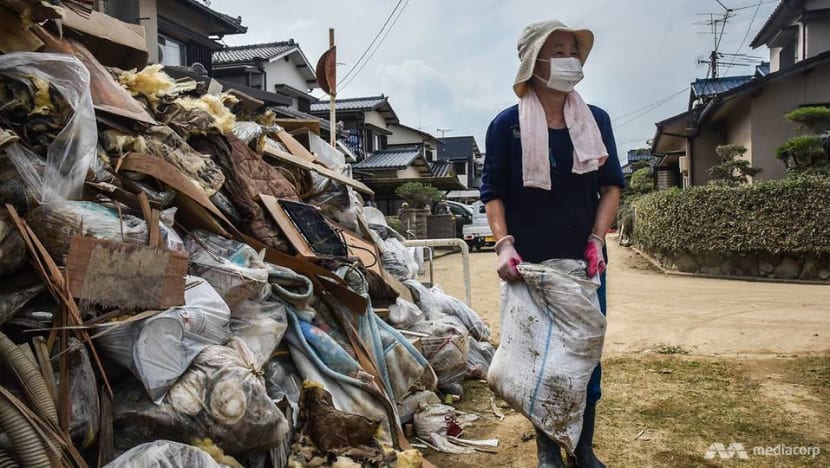
Kyoko Kono brings debris from her ruined home to a growing trash pile in her Mabi neighbourhood. (Photo: Jack Board)
KURASHIKI, Japan: It was 1972 when a major flood last hit Mabi town in Kurashiki. It is still a vivid memory for many of the elderly residents today
Back at that time, the water level rose only about 30 centimetres in the neighbourhood, flooding the street, says Kyoko Kono, 71. Drawing on that experience, she and her husband Karumi thought everything would be fine when the skies opened with menace last Saturday.
Now, they are standing in their home which was left absolutely sodden by the deadly floodwaters that burst through this community last weekend, killing 50 people in Mabi and leaving 11 still missing. Across western Japan, at least 200 people are dead, making this the worst flooding event for more three decades.
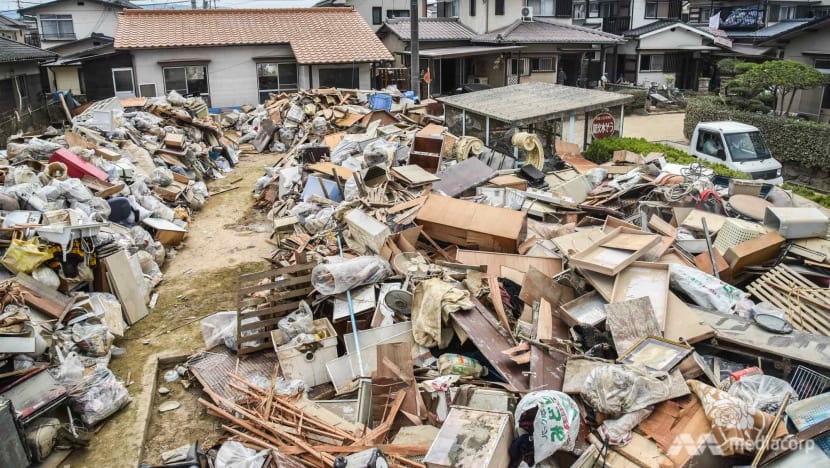
The wooden floor of the house is damaged beyond repair and Karumi is hacking away at a disintegrating ceiling. Most of the couple’s belongings from the ground floor could not be recovered.
“I wasn’t expecting it to be like this. So we didn’t evacuate. We thought we could just go upstairs if the water got higher,” she said. “And most of the people around here thought that too and stayed at home.
“The water came up to the ceiling on the first floor. There was a whirlpool. And then I started to feel very scared.”
She could see other people from the town - many of them older residents - standing on their balconies or roofs waving to passing helicopters for help. Eventually, it was a Japanese Self-Defence crew that collected them in a rescue boat.
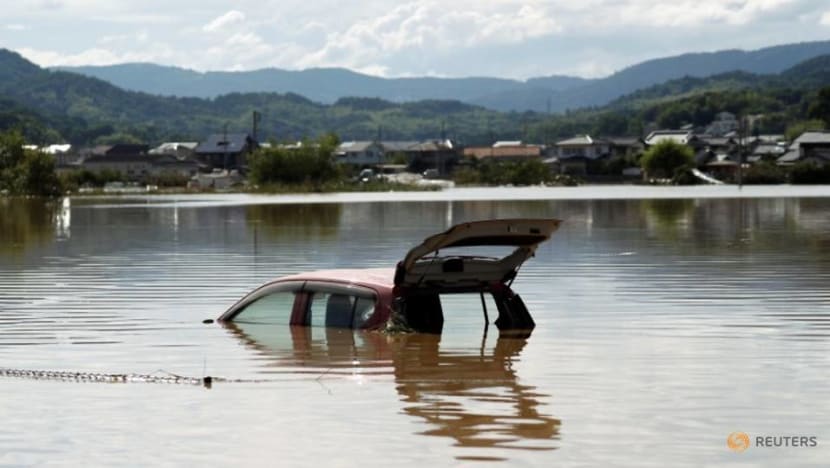
Now, Kono’s two sons have returned to assist with the clean-up and general dismantling of the family home. They suspect it will need to be demolished and completely rebuilt. Karumi’s friends are also coming each day to assist with the heavy labour.
“I really appreciate them coming to help. Otherwise we can’t do anything,” she said.
It is a difficult issue facing many of the affected elderly residents in Mabi. With little government assistance and a slow rollout of volunteers at this stage of recovery, many are facing the cleanup process all but alone.
They will rely on one another - the neighbours they have lived beside for so many years - to get through this difficult chapter.
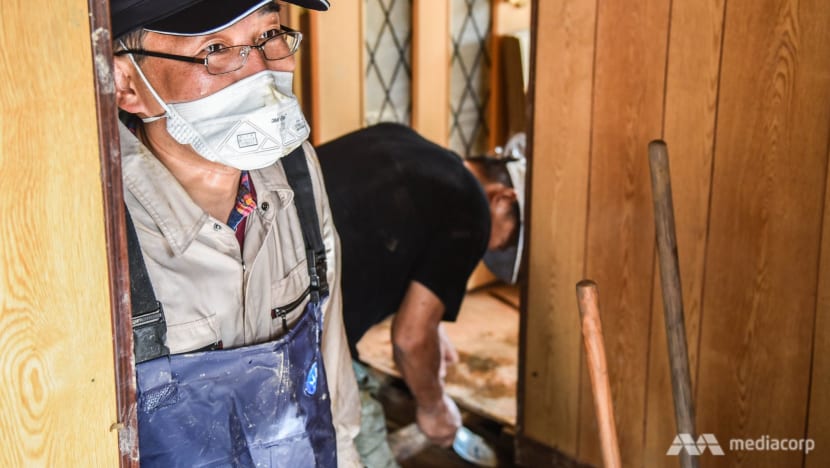
‘I CAN’T LIVE HERE ANYMORE’
Tsuyoshi Fukuchi has been coming to his damaged house from an evacuation centre at 4am these past days, trying to escape the worst of the searing 35-degree temperatures that have persisted since the weekend. The heat is exacerbating a lack of water services to about 250,000 people in the region and making ongoing rescue and recovery efforts exhausting for crews involved.
The 75-year-old says he fears staying in Mabi after this disaster and plans to sell his land, once the house is likely demolished.
“Everything I have I had to throw away,” he said. Although he did salvage treasured framed photos of his grandchildren posing in traditional costumes, which he holds carefully and wipes crumbling dirt from.
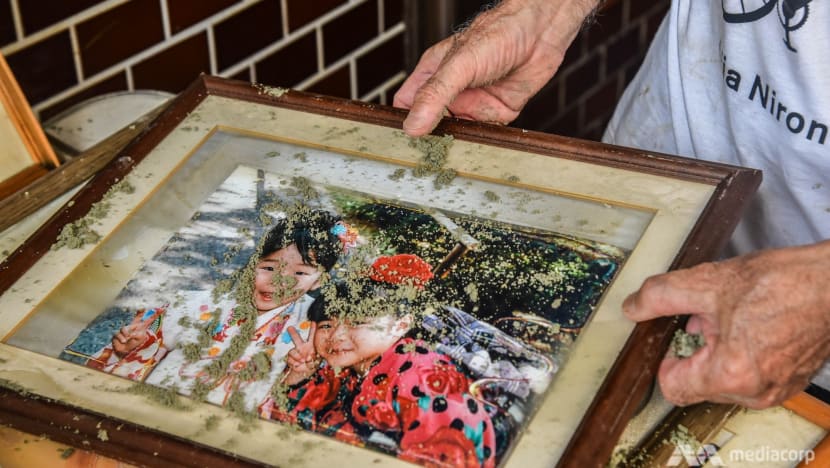
A close neighbour Mutsuo Yoshida says some young volunteers came to help him move his salvageable and precious belongings a few days earlier. Now he faces long weeks or months of recovery ahead with little outside assistance.
“At the start, I met volunteers from Osaka and they came to help clean my house. I just looked at them and cried,” he said. “Looking at this now, I know I can’t live here anymore.”
Just 20 metres from his house, in a park with children’s play equipment, the trashed belongings of the residents from the 70 houses in the neighbourhood are piling up. Crooked bicycles are piled on top of broken electronics, soaked furniture and rotting trash.
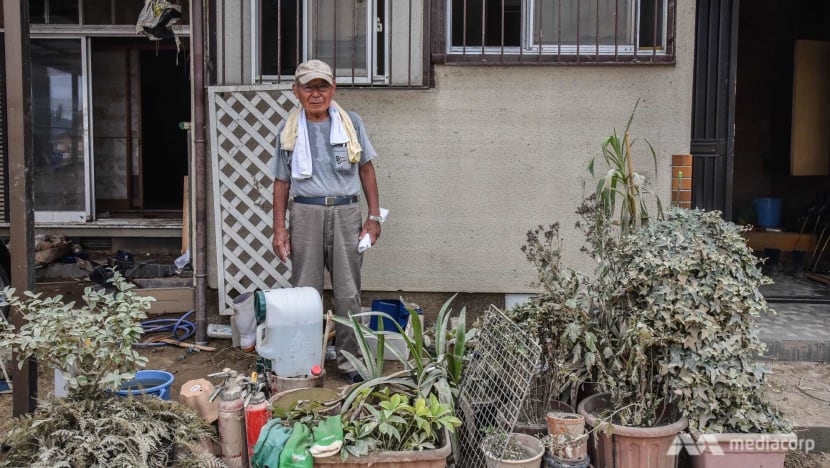
The main roads of the town are the same: small mountains of recovered but rejected flotsam sitting in the swirling dust. Mud has dried hard on many surfaces - the tarmac, plants and walls.
Large department stores have their parking lots crammed with new products that have been left in ruin, workers rushing about adding to the growing piles.
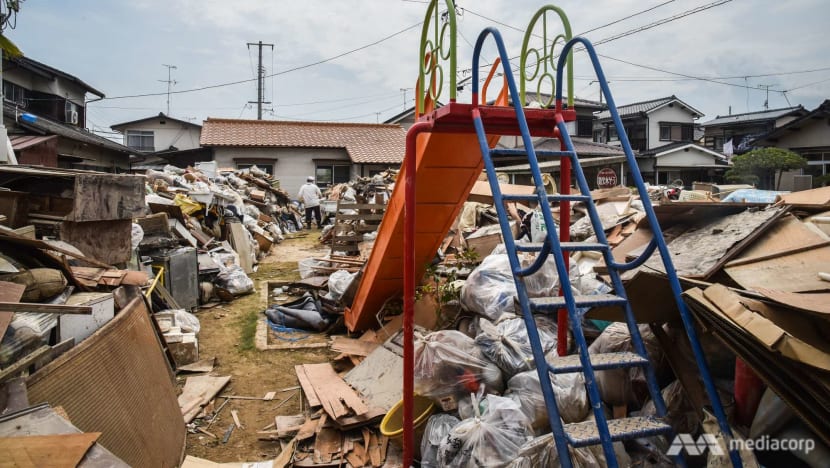
‘IT’S THE WORST THING’
Across the affected prefectures, there are still about 7,000 people living in evacuation shelters. In Mabi, many of them are old and vulnerable. The discomforts and uncertainty that come with sleeping in a public space with few amenities is proving a test for even the most resilient of them.
The evacuees have sufficient provisions, they say, but are missing proper bathing facilities. At Kiyone community centre there is air conditioning, a privilege compared to others camped out in schools.
Fatigue is setting in for the older evacuees with no cars having to walk several kilometres in the heat back to their homes during the day to clean, only returning in the evening to eat and sleep.

Hideo Fujii, 68, has a bad cough when he speaks from a bamboo matted floor where he will stay again for the night. He is surrounded by bottles of drink, mostly green tea, and he laughs wondering how he will ever drink it all.
He says it is still hard to express his feelings. “It’s the worst thing. The worst situation. My house is damaged, my car is gone. I lost everything in fact.”
These makeshift centres, a familiar set-up in a country becoming seemingly more exposed to devastating weather events, could be operating for months until the government establishes a plan to relocate residents or construct temporary housing.
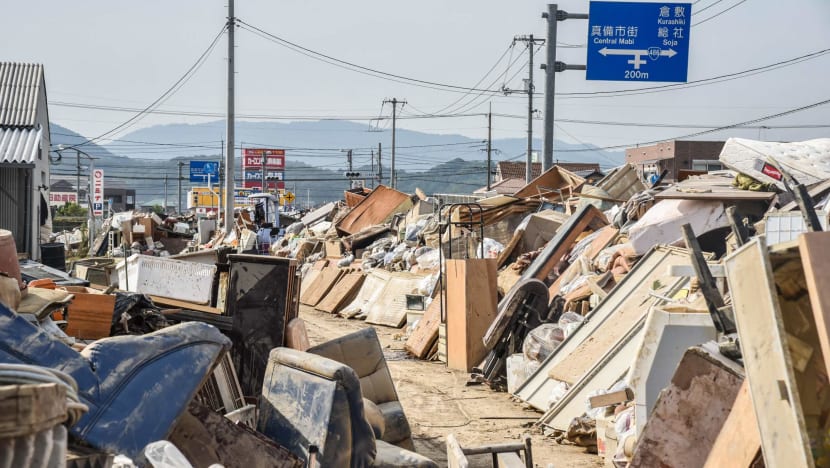
It would prove to be some respite for the likes of Kyoko Kono. But she still holds out hope of a better future in her current location.
“We just care about our health now. It’s hot in the sun and we’re working hard. We need to rebuild our life here,” she said.” And she will not underestimate Mother Nature again.
“I always saw disasters on the TV in other places and thought how hard it was for those people.
“We are so tired. It’s so difficult for us. Now, I really understand.”












